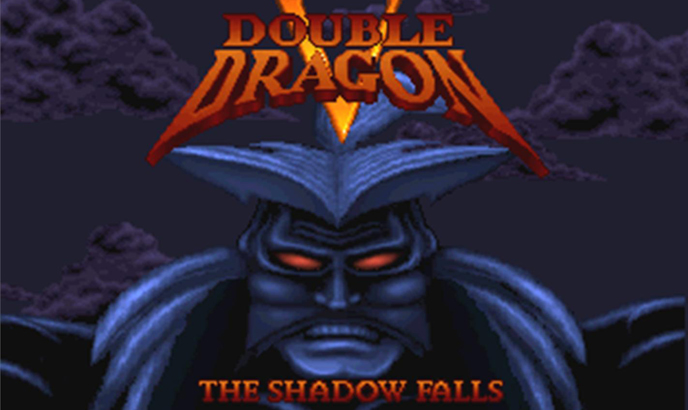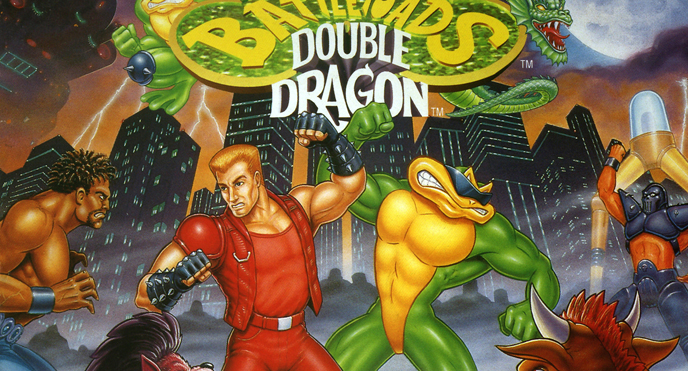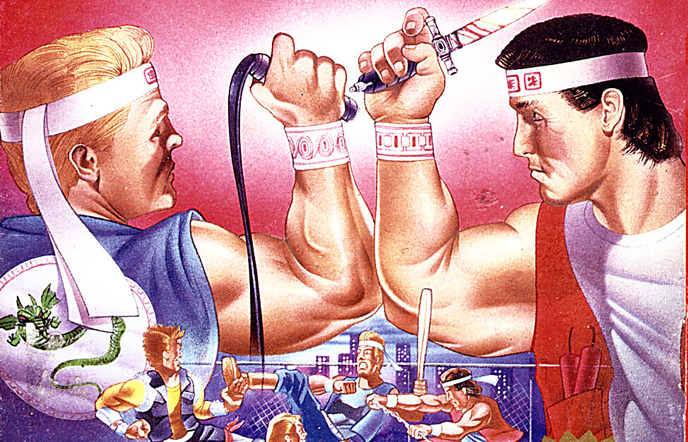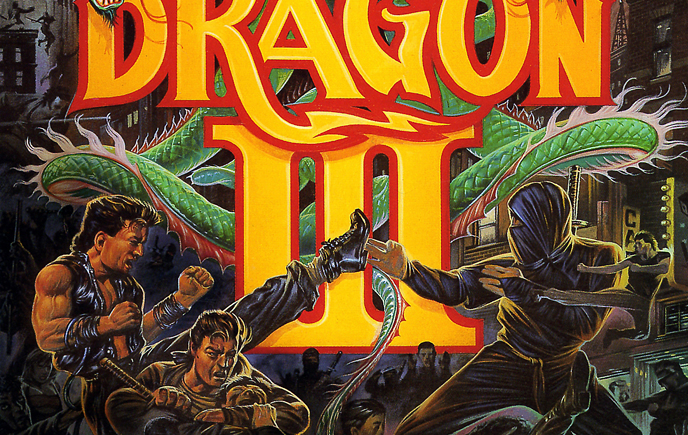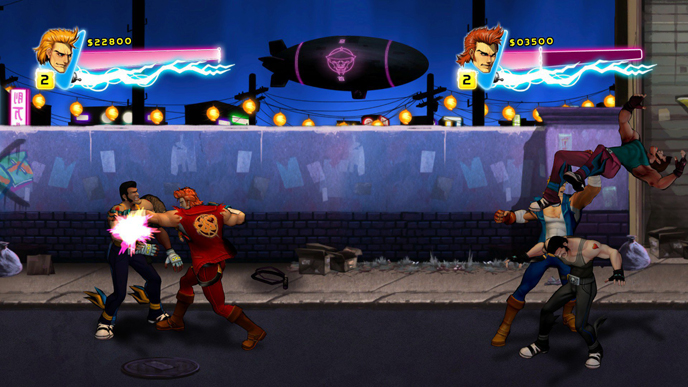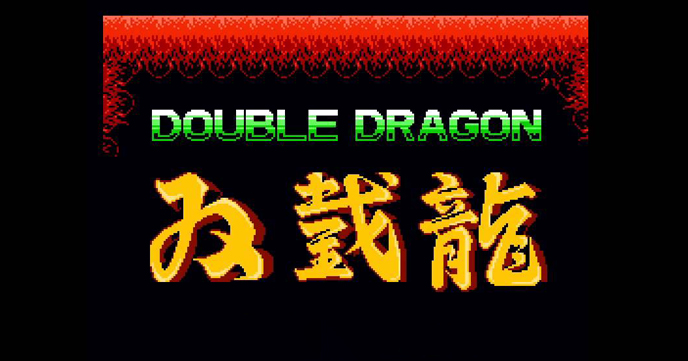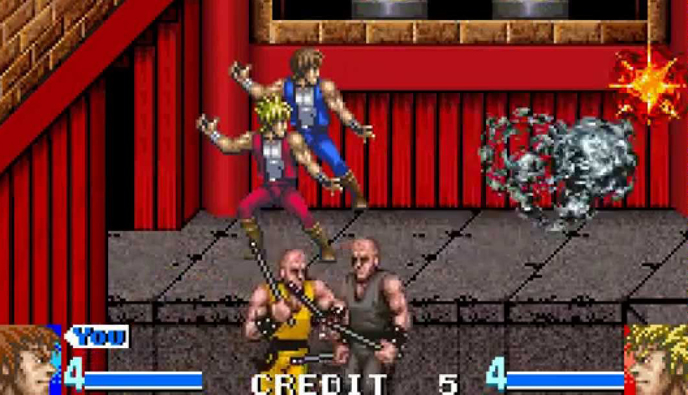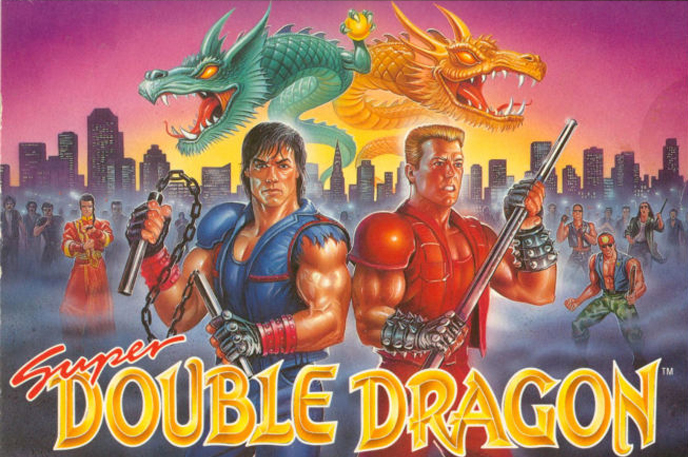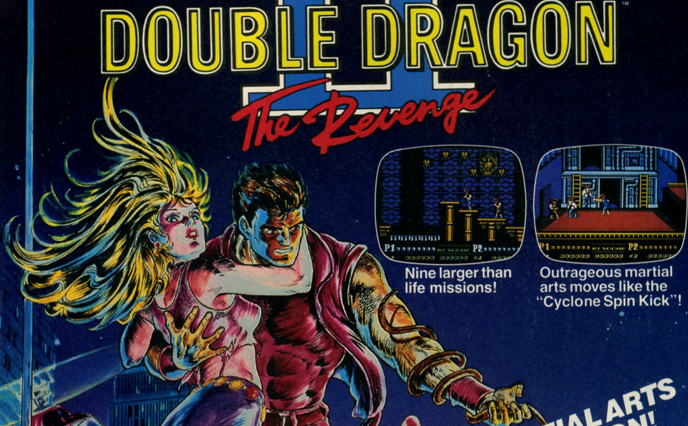The Best Double Dragon Games
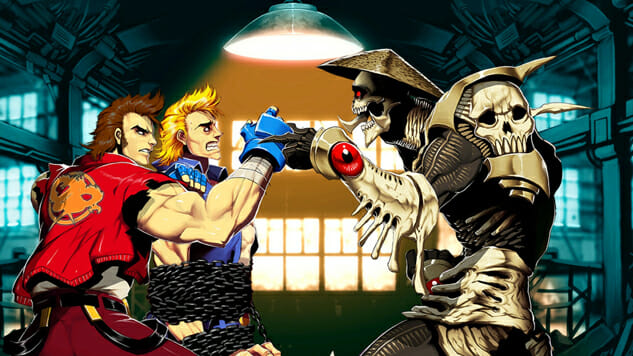
I know I can’t have been the only one excited recently to see a new retro-styled Double Dragon game coming out, and so soon after its reveal. Not just because I would get a new beat ‘em up to fight through, but because the news offered me the perfect opportunity to replay all of the games. I’ve also been re-watching some of the cartoon, one of my favorites when I was a kid, and while I could go read the comics that Marvel produced for the franchise again, or (if I really get desperate for more Double Dragon) there is that movie we don’t speak of, but those are all just icing on the cake to the games. In this post-apocalyptic world Billy and Jimmy Lee battle against the Black Warrior gang in a series inspired by Mad Max and martial arts films. Certain installments can be a bit frustrating, but I always find myself coming back and trying again, pushing forward to save Marian and bring some justice where I can. Now, since the new release has a few people talking, I want to see if I can encourage some new players to try their hand at being the heroes.
So here is a fun list of most of the console and handheld system games and where I think they rank for the player who wants to experience the series before a new installment arrives. Most of these are ports from the original arcade games, which can be found on Steam as a collection.
10. Double Dragon V: The Shadow Falls (1994)
This game was not made by Technos and doesn’t play like the popular entries in the franchise, or even play ‘well’ for that matter. It is a one-on-one fighting game that stole all of its inspiration from Street Fighter II, attempting to capitalize on the success of the budding genre that games like it and Mortal Kombat that had inspired massive consumer demand. There are twelve playable characters, all taken from the mostly enjoyable Double Dragon cartoon, an awkward mechanic for altering stats, and somewhat serviceable music. The graphics and stages are mostly forgettable and combat is extremely lackluster. If they wanted to copy Street Fighter, they should have gone all out with that on the mechanics, as the word clunky doesn’t even begin to describe trying to execute special moves. The motions aren’t smooth and fights have such a rough flow that the game loses any appeal it might have quickly. This one shouldn’t even be considered part of the series, so just skip it.
9. Double Dragon (1993)
This one shouldn’t be played, or exist, as it shares almost nothing with the rest of the titles in the series, other than a name. Developed by Virgin Games, this handheld edition for the Sega Game Gear has a much different story that sees Billy Lee avenging the murder of his brother, Jimmy. It doesn’t play at all like the originals. Not only is the combat floaty, making it difficult to land certain moves, for some reason characters can pick up and use guns, which just feels odd and out of place in this series. The sprites and backgrounds look good, but any type of motion is choppy and irritating to the eyes. Here, the music also fails to achieve anything significant, a major faux pas in a series that has a lot of good tunes. But the worst part is that the sound effects do not fit a beat ‘em up in the slightest and takes me out of the action. This mistake of a game is brief, beatable in just over an hour with no additional modes or benefits for playing it again. Honestly, it shouldn’t have even made the list.
8. Battletoads and Double Dragon: The Ultimate Team (1993)
This one almost didn’t make the list. As their placement in the title might imply, this is much more of a Battletoads game than it is a starring role for the Lee brothers. The plot is even centered on events involving their villain, The Black Queen. Technos had almost no involvement in this and it shows. Gameplay feels like a Battletoads game and many of the Double Dragon enemies were misnamed. It released on the NES, pushing that system to its limits, and then came to the 16-bit consoles, where those two versions were not that different. The game is difficult, where you can get stuck in enemy attack combos and when one player dies, both must continue back at the start of the level. This becomes a pain due to stages being quite lengthy. The game was critically well-received when it first came out but it doesn’t hold up. There are some neat segments, but it’s mediocre overall. Weirdly, some have still defended this one as their favorite.
7. Double Dragon (1995)
This entry is a Neo Geo fighting game that was ported to the PlayStation. It’s loosely based off of the 1994 film. This title may actually be what Double Dragon V was trying to accomplish in making something akin to Street Fighter, but it worked better because Technos had a hand in the development. It copies a lot from the iconic series, but the coolest addition is being able to strike opponents while they are on the ground and that super moves don’t end until the round is over. The AI is tough but not too bright, providing a solid challenge for even veterans of the fighting genre. I love the visuals but a couple of things are missing on the PlayStation version, like certain stage animations, and the sprites just aren’t as crisp. The new music here isn’t bad, but it has odd loops and gets old quick. This port also seems to have longer load times and there is this odd 3D mode that is kind of terrible and I have no clue why it exists. The title received almost no attention when it released and isn’t great, but can be kind of a quirky fun.
6. Double Dragon III: The Sacred Stones (1991)
The third installment of the classic console trilogy follows Bimmy and Jimmy Lee… right, there are typos on the first screen of the two player mode. This isn’t really a surprise though, because the story received a huge overhaul late in development and the game itself was rushed. Originally subtitled The Rosetta Stone in arcades, this may have been one of the first instances of micro-transactions, as items from the shops actually cost additional quarters, earning the game a bad reputation. Of its several ports, the NES version is probably the best out of what is a very troubled game. Various weapons, new moves like running as well as the beautiful somersault flip to throw enemies, and more playable characters are available this time around—once you beat them as bosses—with each playing differently and having their own special item to use. The controls are a tad stiff and hit boxes do not always register. The enemies seem more adept and aggressive than the previous two entries, and players are given just one life and a single continue, which only becomes available after a certain point. It isn’t impossible, but probably the toughest in the series, and few people actually enjoy it.
5. Double Dragon Neon (2012)
This is just a fun experience. WayForward, a company who built themselves a good reputation with older franchises, tried their hand with the Lee brothers and it is obvious they’re fans. The game is almost a hyper-realized parody of the series, poking fun at the past games and drenching itself in 80s style, humor, and cultural references. The title perfects the presentation with vibrant colors, giving it a cartoony feel, good looking sprites, and creative level design. The voice acting is enjoyable and cheesy, and the music, while bizarre, is still highly appropriate. The mixtapes you find are important, as they are used as an upgrade system, with the shops from part three making a return. The game is a bit more technical, with a slew of different moves, magic, and even a life sharing mechanic for two players, but the dodging maneuver granting two times damage temporarily is something players will need to master. Practice quickly though, because this game can be quite tough with some cheap enemy attacks and no checkpoints. Once the lives are depleted, it’s back to the very beginning. This is a short one also, but has a lot of fun reasons to replay it.
4. Double Dragon (1988)
It’s always hard to beat the original, and while many people first experienced the series with this entry title, it has its problems. Due to limitations in the hardware and Technos’ lack of familiarity with it caused this game to lose something so big that it would contradict the very title of the game itself —it’s second player. That’s right, this Double Dragon entry is only one player (well, simultaneously, Mode B aside), To account for Jimmy Lee’s absence they changed the story to make him the enemy leader—an element the cartoon would use years later—which is supposed to be a big surprise, but there is really nothing here to guide the story. It’s simple though and capsulated excellently in the opening minute, showing Marian being punched in the gut and kidnapped. That’s all anyone needs to know really, to get the girl back. The game suffered from several glitches and only two enemies could appear on screen at the same time and they are the same type. This one is fun but will require some strategy and practice, as there are no continues, unless playing the Master System version, but there is an amazing soundtrack that accompanies every playthrough as battling through the streets, leveling up to learn new moves.
3. Double Dragon Advance (2003)
At this point, the series had been on an eight year break and the ruins of the bankrupt Technos formed a new group called Million, who worked on this little gem. This is another reimagining of the first game, but this time it is much more inspired by the arcade versions. The developers took what had worked from the series as a whole and improved on it before adding some other new elements. There are new moves, weapons, and stages from not only the Double Dragon series but some ideas from their other properties as well. The look is great on the Game Boy Advance and the music is fine, but its gameplay can be a bit brutal if caught off guard by the AI. Fighting alongside a friend is possible with a link cable, but just like the arcade, if you beat the boss you’ll have to fight each other at the end. The game is almost criminally short at under an hour, but there is a cool survival mode for replay. This entry may also be the series most critically reviewed installment as well.
2. Super Double Dragon (1992)
Exclusively for the SNES, this is the first Double Dragon game that was not a port from an arcade title. It was seen as a sort of reboot or reimagining of the first game, even being called The Return of Double Dragon in Japan. It plays similarly to the originals with a higher focus on ground combat, weapons, and a power meter for special attacks, with one of the biggest additions being the ability to block and counter attacks with good timing. The combat is made a bit more difficult because of the hit detection and how easy it is to get overwhelmed and dogpiled, but many cite the slow pacing of the game as its most significant hinderance. I was not personally bothered by the pacing, as this is my favorite entry in the series, but I can see why some are turned off. The graphics look good, and the music is energetic and fun, but it feels like there is something missing. A lot, actually, as the version we got was bereft of many options, extra stages, and cutscenes. There are rumors that Marian was even supposed to be a playable character, or at least appear in the story as a policewoman. The game was rushed, Technos was in financial trouble, and the game received poor media coverage upon its launch. This title is still fun two player action and belongs in the series, but the Japanese release is the more complete version of the game.
1. Double Dragon II: The Revenge (1990)
I remember seeing the cartoon commercials for this game, and they were amazing. I saved up my money and knew that I’d be buying something awesome, even though that past the commercial, all I had seen were a few screenshots. I was a little irked that I had fought so hard to save Marian and win her affection previously, only to have her get shot at the beginning of this one—it sucks to be Marian. Unlike its predecessor on the NES this game did allow for fierce two player action and it got rid of that weird leveling system, allowing players to start with a full arsenal of moves. There were some new ones as well, like the awesome spin kick, but they aren’t always easy to pull off when surrounded. Controlling the character is different here where one button punches in front of the player and the other kicks behind them, but this switches depending on which way the sprite is facing. That sounds confusing and it does take a bit to get used to, but moving will eventually feel like second nature. Jumping on the other hand is done by pressing A + B and is the worst during the platforming sections. There are some truly cheap deaths in this game and some understandable frustration. The presentation doesn’t look that much different but I like the colors more and they switch up the side-scrolling view in a couple of sections. The sequel is a nice upgrade of the first Double Dragon where the developers got to do things more like they wanted and include things the first game was supposed to have, like cutscenes for story. G-R-A-S-P! In the end though, they simply made it more fun and rewarding.
Overall I think this one is the quintessential game of the series and the best choice for new players to start with. There may be deaths and some frustration, but don’t be intimidated, as this game captures the true spirit of the series. Also, don’t be fooled and play Double Dragon II: Wander of the Dragons. That’s an atrocity and a review for later.
Stephen Wilds is a freelance author with a flair for retro videogames, old cartoons, and bad movies. He has written for Playboy, Unwinnable and others.
